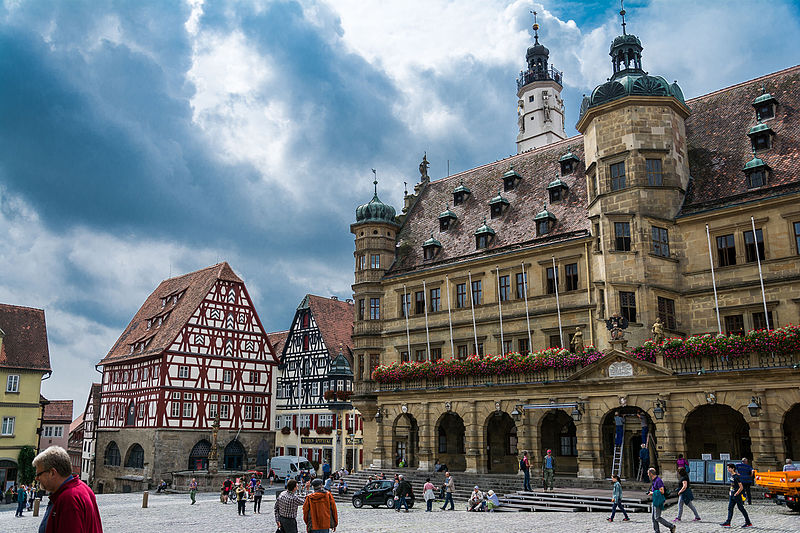
The Romantic Road is a two-lane, 220-mile route that traverses the southern German provinces of Bavaria and Baden-Württemberg. This scenic trail takes you through rolling vineyards, misty
forests, and lake-studded countryside. Along the way are countless country villages and tiny towns, where fairytale spires and neo-Gothic churches sit beside half-timbered houses with balconies overflowing with ruby red and vibrant pink flowers. Rothenburg ob der Tauber, Germany's best-preserved medieval walled town, is the crowning jewel of the Romantic Road.
Rothenburg ob der Tauber is a pocket-size city overlooking the Tauber River, with a compact grid of winding cobblestone streets, colourful crooked houses, sun-splashed courtyards, and red shingled roofs all enclosed within a stout stone rampart. It is incredibly picturesque, so much so that its storybook good looks have provided settings for a number of films, including the 1968 musical Chitty Chitty Bang Bang.
Visitors flock to this UNESCO-listed city throughout the year, but they swell during the festive season. Avoiding the biggest crowds means you can discover Rothenburg's sights, attractions, and centuries of turbulent history at a more leisurely pace. Settlement in Rothenburg dates back to 970 CE, but it wasn't until 1170 that a town was officially founded. It was granted Imperial City status in 1274 by the Emperor of the Holy Roman Empire. The city expanded and its fortifications grew until, during the Middle Ages, Rothenburg became very rich thanks to its location along a vital trade route, a thriving textile industry, and the surrounding fertile farmland. For a time, this pretty medieval spot was one of the wealthiest cities in the world.
However, its fortunes changed with a number of far bleaker periods, including war, natural disasters, and the bubonic plague, which all contributed to Rothenburg's eventual demise. Of these, the Thirty Years War of 1618-1648 was one of the most tragic, and the one that has remained most firmly ingrained in local folklore.
The town sided with King Adolphus and the Protestants, only to be besieged and conquered by General Tilly, leader of the imperial Catholic army. According to legend, General Tilly was intent on burning the city down but promised to spare Rothenburg if anyone could drink a gallon of wine in one fell swoop. Fortunately, the plucky mayor stepped forward and saved the day. Today the story of the Meistertrunk is re-enacted every hour through mechanical clock figures on the Ratstrinkstube, or Councillor's Tavern, in the market square.
The city's past is best understood on a tour with the night watchman. He leads a fascinating — and highly entertaining — hour-long tour through the dark city streets, regaling visitors with tales of the brutality of medieval life, pointing out the town's gallows and the metal contraption used for the "baker's baptism". If a baker was discovered to have cheated with his ingredients, then he was locked in a cage and dunked in water.
Rothenburg is also home to an equally tumultuous Jewish heritage. Individual Jews are mentioned living in Rothenburg as early as 1180, and the first Jewish community is recorded in 1241. In the middle of the 13th century, the famous Talmud scholar Rabbi Meir ben Baruch lived and taught here, establishing a Talmudic school in today's Kapellenplatz, near the White Tower. Alongside the two-storey school, the neighbourhood housed a synagogue, a community hall, and a mikveh. Photo by Bhanakam, Wikimedia commons.







































